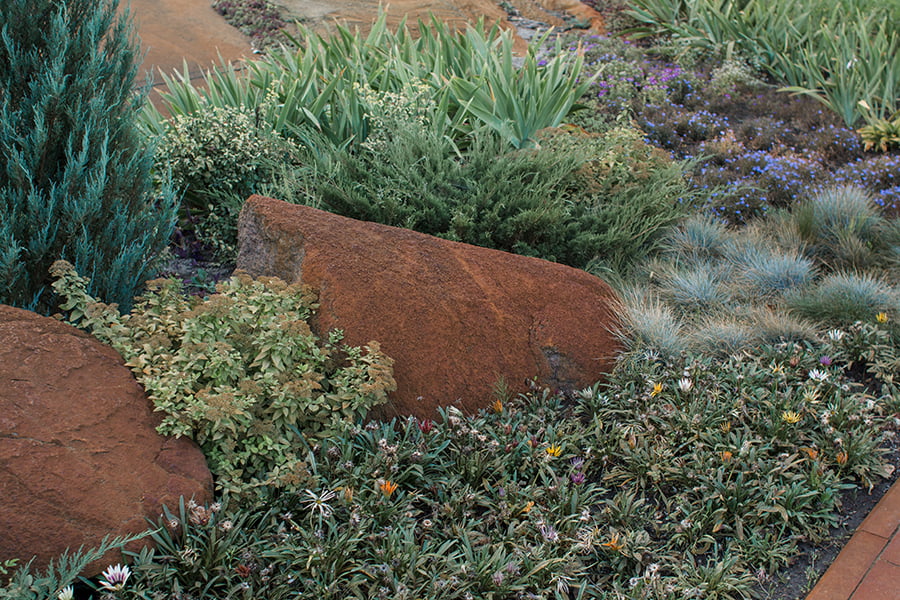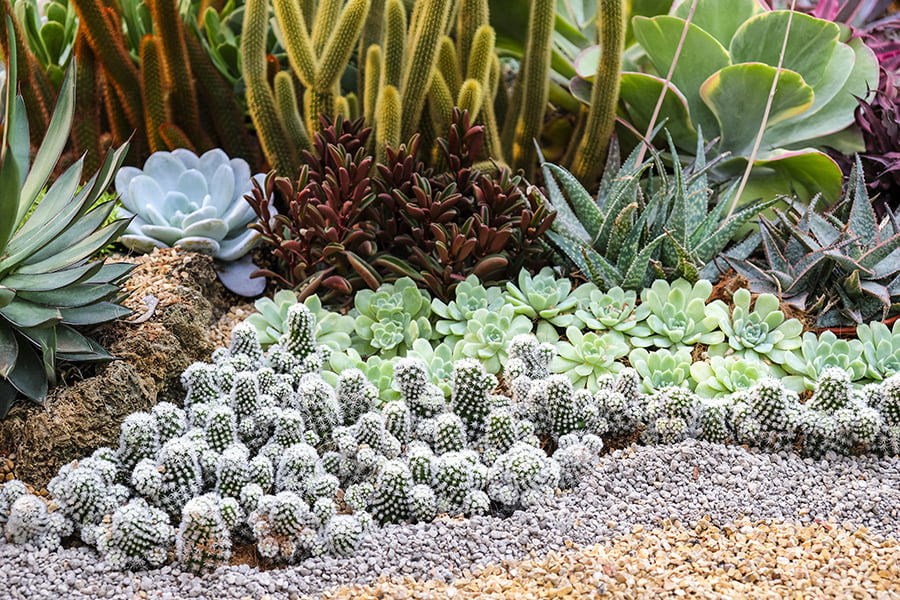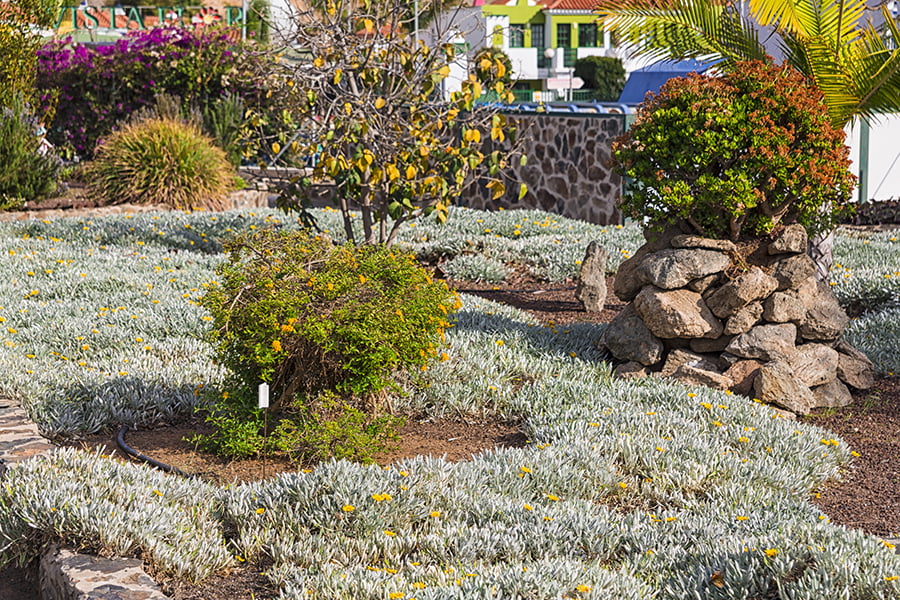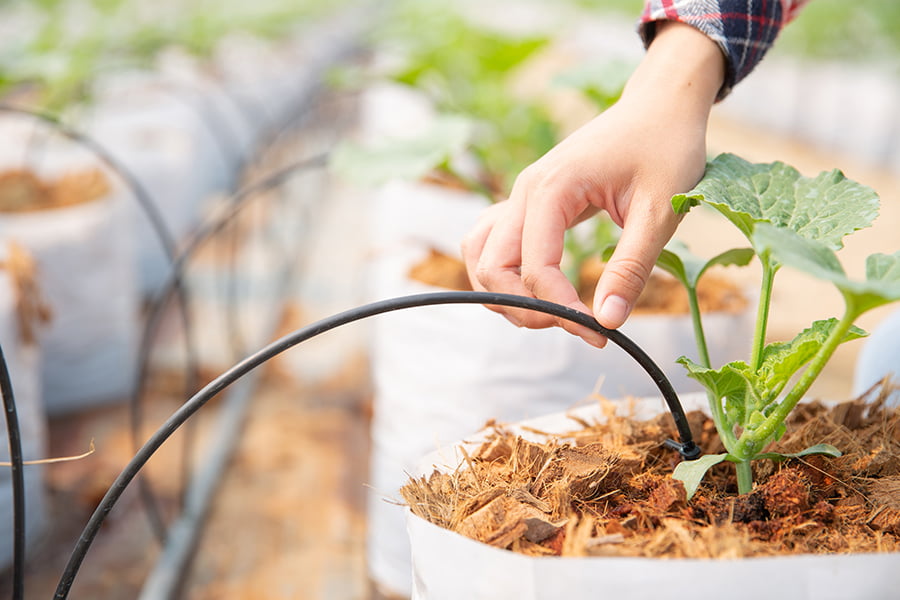Discover effective strategies for creating a thriving garden with minimal water by learning about drought-tolerant landscaping options suitable for various climates.
Key takeaways:
- Reduce lawn size to conserve water and create a sustainable landscape.
- Incorporate hardscape elements for visual interest and reduced water usage.
- Plant drought-tolerant native species and group them according to water needs.
- Use mulch to retain soil moisture, suppress weeds, and improve fertility.
- Water wisely, adjust watering schedule, and maintain regularly for a thriving garden.
Reduce Your Lawn

Shrinking the size of your lawn can dramatically reduce water usage in your garden since traditional grass varieties often require frequent watering to stay green. Consider these points for effectively minimizing lawn space:
- Identify the functional areas: Maximize the utility of your yard by keeping only the grassy areas you actively use for recreation or aesthetic purposes.
- Explore ground cover alternatives: Low-growing, drought-resistant plants like creeping thyme or sedum can fill in space and add texture with far less water than grass.
- Embrace ornamental grasses: These can provide a similar look and feel to traditional lawns but with a fraction of the water needs.
By strategically reducing lawn size, you will not only conserve water but also create a unique and sustainable landscape that requires less maintenance over time.
Use Decorative Hardscape Elements
Incorporating hardscape features into your yard not only adds visual interest but also reduces the need for water-dependent grass and plants. Consider using elements like stone pathways, gravel beds, or decorative boulders to cover ground space. These elements require no irrigation and can create a naturally beautiful setting that complements your drought-tolerant plants.
Adding a patio or deck provides an outdoor living area that reduces the amount of vegetation necessary for an attractive landscape. Not only does this space work for entertainment, but it also brings down your garden’s water requirements.
Moreover, hardscapes like retaining walls can also help with soil erosion, which is common in drought-prone areas. These structures support the soil while adding an aesthetic touch to the landscape. Using permeable materials for hardscaping allows for proper drainage and minimizes runoff, contributing to a sustainable and efficient yard design.
To tie the landscape together, consider using decorative pebbles or crushed granite to fill gaps between plants. This technique will lend a cohesive look to your garden while still serving the practical purpose of conservation.
Plant Densely With Drought-Tolerant Native Plants
Creating a lush landscape doesn’t mean you need water-hungry plants. Opting for native plants acclimatized to your region’s rainfall patterns is a smart choice. These plants have evolved to thrive in your local climate and soil conditions, making them well-suited for surviving dry periods.
Consider grouping plants with similar water needs together. This technique, known as hydrozoning, ensures that each plant receives the right amount of water without wasting it on those that need less. Not only does it conserve water, but it also prevents overwatering, which can lead to root rot and other diseases.
While selecting plants for your garden, look for species with characteristics typical of drought-resistant varieties. These may include small or narrow leaves, which reduce water loss, or gray and silver foliage that reflects sunlight and conserves moisture. Some excellent choices are succulents like aloes and agaves, ornamental grasses, and flowering plants such as lavender or salvia.
Remember to space your plants appropriately when planting. Over time, they will grow to fill in the gaps, creating a full, vibrant garden. Initially, this might mean your garden looks a bit sparse, but patience is key. A densely planted area not only minimizes evaporation but also reduces weed growth, lessening the need for maintenance and additional watering.
Make the Most of Mulch
Mulch serves a critical role in drought-tolerant landscaping by retaining soil moisture, reducing water evaporation, and suppressing weeds that compete with plants for water. A generous layer of mulch can act as a protective barrier for the soil against the harsh effects of the sun.
Organic materials like bark chips, straw, or cocoa bean shells enrich the soil as they break down, which can improve soil structure and fertility over time. This also promotes a healthy environment for earthworms and beneficial microbes that aid plant growth.
Inorganic mulches such as gravel or river rock can also be effective, especially in creating a heat-tolerant landscape. They do not break down like organic mulches, hence requiring less frequent replenishment. Moreover, they reflect heat away from plants, helping to keep the root zone cool.
When applying mulch, aim for a depth of about two to four inches, taking care to keep the material away from plant stems to prevent rot. Remember that mulching also reduces time spent on maintenance, such as weeding and watering, making your landscaping efforts more sustainable.
Water Wisely and Maintain Regularly
Efficient watering practices can significantly enhance the resilience of your drought-tolerant landscape. Aim to irrigate early in the morning or late in the evening when temperatures are lower; this reduces water loss due to evaporation. Drip irrigation systems are ideal for delivering water directly to the plant’s roots where it’s needed most, minimizing waste.
It’s also crucial to adjust your watering schedule based on the season and current weather conditions. For example, less frequent watering during cooler months helps plants develop deeper roots, further increasing their drought resistance.
Beyond watering, regular maintenance is key to the health of your landscape. This includes pruning dead or overgrown branches, which not only helps plants’ growth but also ensures optimal air circulation and sunlight penetration.
Lastly, keep an eye out for weeds, which compete with desirable plants for water and nutrients. Prompt removal will help maintain the vigor of your drought-resistant vegetation and preserve its aesthetic appeal. Remember, the goal is to create a sustainable ecosystem that flourishes with minimal intervention over time.




